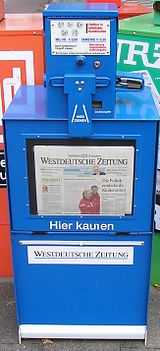Vending machine

A vending machine is a machine that dispenses items such as snacks, beverages, alcohol, cigarettes, lottery tickets, cologne, consumer products, and even gold and gems to customers automatically, after the customer inserts currency or credit into the machine.
History

The earliest known reference to a vending machine is in the work of Hero of Alexandria, a first-century AD Greek engineer and mathematician. His machine accepted a coin and then dispensed holy water.[1] When the coin was deposited, it fell upon a pan attached to a lever. The lever opened a valve which let some water flow out. The pan continued to tilt with the weight of the coin until it fell off, at which point a counterweight snapped the lever up and turned off the valve.
Coin-operated machines that dispensed tobacco were being operated as early as 1615 in the taverns of England. The machines were portable and made of brass.[2] An English bookseller, Richard Carlile, devised a newspaper dispensing machine for the dissemination of banned works in 1822. Simeon Denham was awarded British Patent no. 706 for his stamp dispensing machine in 1867, the first fully automatic vending machine.[3]
Modern vending machines

The first modern coin-operated vending machines were introduced in London in the United Kingdom in the early 1880s, dispensing post cards. The machine was invented by Percival Everitt in 1883 and soon became a widespread feature at railway stations and post offices, dispensing envelopes, postcards, and notepaper. The Sweetmeat Automatic Delivery Company was founded in 1887 in England as the first company to deal primarily with the installation and maintenance of vending machines.
The first vending machine in the U.S. was built in 1888 by the Thomas Adams Gum Company, selling gum on New York City train platforms. The idea of adding games to these machines as a further incentive to buy came in 1897 when the Pulver Manufacturing Company added small figures, which would move around whenever somebody bought some gum from their machines. This idea spawned a whole new type of mechanical device known as the "trade stimulators".
Mechanism
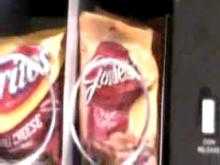
After paying, a product may become available by:
- the machine releasing it, so that it falls in an open compartment at the bottom, or into a cup, either released first, or put in by the customer, or
- the unlocking of a door, drawer, or turning of a knob.
Some products need to be prepared to become available. For example, tickets are printed or magnetized on the spot, and coffee is freshly concocted. One of the most common form of vending machine, the snack machine, often uses a metal coil which when ordered rotates to release the product.
The main example of a vending machine giving access to all merchandise after paying for one item is a newspaper vending machine (also called vending box) found mainly in the U.S. and Canada. It contains a pile of identical newspapers. After a sale the door automatically returns to a locked position. A customer could open the box and take all of the newspapers or, for the benefit of other customers, leave all of the newspapers outside of the box, slowly return the door to an unlatched position, or block the door from fully closing, each of which are frequently discouraged, sometimes by a security clamp. The success of such machines is predicated on the assumption that the customer will be honest (hence the nickname "honor box"), and need only one copy.
Bulk candy and gumball vending
Bulk candy machines are mechanical machines that vend a handful of candy, a bouncy ball, or perhaps a capsule with a small toy or jewellery, for one or two coins. The items may be unsorted; in that case what the customer exactly gets is subject to chance. In other instances, the customer is guaranteed a specific type of candy.
The growth bargins in the bulk candy business can be quite high – gumballs, for instance, can be purchased in bulk for 2 cents a piece and sold for 25 cents in the US. Gumballs and candy have a relatively long shelf life, enabling vending machine operators to manage many machines without too much time or cost involved. In addition, the machines are typically inexpensive compared to soft drink or snack machines, which often require power and sometimes refrigeration to work. Many operators donate a percentage of the profits to charity so that locations will allow them to place the machines for free.
Bulk vending may be a more practical choice than soft drink/snack vending for an individual who also works a full-time job, since the restaurants, retail stores, and other locations suitable for bulk vending may be more likely to be open during the evening and on weekends than venues such as offices that host soft drink and snack machines.
Cigarette vending
Cigarettes were commonly sold in the United States through these machines, but this is increasingly rare due to concerns about underage buyers. Sometimes a pass has to be inserted in the machine to prove one's age before a purchase can be made. In the United Kingdom, legislation banning them outright came into effect on October 1, 2011.[5] In Germany, Italy, Czech Republic and Japan, cigarette machines are still common.
Since 2007, however, age verification has been mandatory in Germany and Italy - buyers must be 18 or over. The various machines installed in pubs and cafés, other publicly accessible buildings and on the street accept one or more of the following as proof of age: the buyer's identity card, bank debit card (smart card) or European Union driver's license.
In Japan, age verification has been mandatory since 1 July 2008 via the Taspo card, issued only to persons aged 20 or over. The Taspo card uses RFID, stores monetary value, and is contactless.
Full-line vending

A full-line vending company may set up several types of vending machines that sell a wide range of products. Products may include candy, cookies, chips, fresh fruit, milk, cold food, coffee and other hot drinks, bottles, cans of soda, and even frozen products like ice cream. These products can be sold from machines that include coffee, snack, cold food, 20-oz. bottle machines, and glass-front bottle machines. In the United States, almost all machines accept bills with more and more machines accepting $5 bills. This is an advantage to the vendor because it virtually eliminates the need for a bill changer. Larger corporations with cafeterias will often request full line vending with food service.
Specialized vending
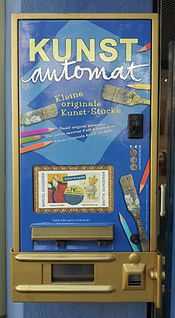
In the Western world, some vending machines dispense personal products, typically in public toilet facilities. The machines in ladies' restrooms typically sell pads or tampons. The machines in men's rooms, when they are present, are most commonly for the sale of condoms, though in some locations they may be found dispensing cologne, medicine, small candies, or even pornography.[6] These are often found at toilets used by transient persons in high traffic locations, such as bus stations, shopping centres, airports and service stations.
From the 1950s until well into the 1970s, vending machines were used at American airports to sell life insurance policies covering death, in the event that the buyer's flight crashed. Such policies were quite profitable, because the risk of a plane crash is low. However, this practice gradually disappeared due to the tendency of American courts to strictly construe such policies against their sellers, such as Mutual of Omaha.[7]
Starting with 1994, vending machines approached successfully the basic food commerce specialization and began to compete with the Fast-Moving Consumer Goods industry. Milk dispensers and egg vending machines networks spreading in European towns accelerated after 2000.[8] The basic food vending machines are usually owned by farmers selling their production directly to consumers, providing fresh food to urban population at low prices, small operational costs and encouraging the distributism.
Another type of vending machine is a Chargebox which is used for charging small mobile devices such as mobile phones and ipods. They are useful for when one runs out of power on such devices in between locations like home and work.
From 2000-2010, specialization of vending machines became more common. Vending extended increasingly into non-traditional areas like electronics, or even artwork.[9] Machines of this new category are generally called Automated Retail kiosks. The trend of specialization and proliferation of vending machines is perhaps most apparent in Japan where vending machines sell products from toilet paper to hot meals and pornography, and there is 1 vending machine per 23 people.[10]
Liskom (Russia) and Xerox (Global) both have coin-operated or pay-per-copy vending machines.
In November 2013 online auto retailer, Carvana, opened the first car vending machine in the U.S. located in Atlanta.[11]
In the United States the marijuana vending machine dispenses medical marijuana.
In schools
In the United States, under pressure from parents and anti-obesity advocates, many school districts moved to ban sodas, junk foods, and candy from vending machines and cafeterias.[12] State legislators in California, for example, passed laws banning the sale of machine-dispensed snacks and drinks in elementary schools in 2003, despite objections by the California-Nevada Soft Drink Association. The state followed more recently with legislation to prohibit their soda sales in high schools starting July 1, 2009, with the shortfall in school revenue to be compensated by an increase in funding for school lunch programs.[13] A similar law passed by the Connecticut General Assembly in June 2005 was vetoed by governor Jodi Rell, who stated the legislation "undermines the control and responsibility of parents with school-aged children."[14]
With increasing concern over traditional vending machine products in schools, healthier vending options have gained popularity in the US.[15][16] Such "healthy vending machines" are marketed as allowing students to perform better in addition to better health.
Over recent years, there has been debate over schools providing condoms for student use, possibly through a vending machine.[17] In late 2012, 22 public high schools in Philadelphia installed vending machines providing free condoms.[18]
Safety and security issues
Risk of falling machines
Most modern vending machines are tested and designed to inhibit theft, with security measures resulting in designs similar in strength to safes. As a result, the machines can be very heavy.
A few people have been fatally injured after having a vending machine topple over them, either while they were attempting to steal from the machine, or venting frustration over a malfunction which caused a failure to dispense the purchased item or the proper change. An article in the Journal of the American Medical Association (11 November 1988, p. 2697) documents 15 cases in which men trying to get a can out of the machine were crushed. Three died, the other 12 required hospitalization for injuries such as fractures of the skull, toe, ankle, tibia, femur, and pelvis; intracerebral bleeding; knee contusion; and one punctured bladder. The article states that because the soft drinks are located in the upper half of the machine (so that they can fall into the dispensing slot), the center of gravity of the machine is abnormally high. Because of this high center of gravity, the machine will fall over once it has been tipped only 20 degrees, an unexpectedly small angle. A large, fully loaded soft drink machine can weigh over 400 kg (880 lbs.)
Coin fraud
One issue with vending machines, particularly mechanical vending machines, involves the use of coins of foreign currency, or, in more extreme cases, worthless tokens or washers (commonly referred to as slugs), which have the same size and shape as the coin accepted by the machine. This is done to pay less for merchandise, and sometimes in order to get change that has more value than the originally inserted object.
One remarkable example of this was the use of Libyan coins of 100 Dirhams and 50 Dirhams denominations in Maltese vending machines in the late 1990s. The 100 Dirham coin was used in place of the 1 Maltese Lira coin which had, back then, a de facto black market value of approximately 10 Libyan Dinars and thus having a value 100 times higher than that of the fraudulent coin. Similarly, the 50 Dirhams coin was used in place of the 25 Maltese cent, which meant a 50-fold increase of value according to the black market price. However, this problem was quickly solved when the machines involved were quickly replaced with new ones that could detect the difference between the Libyan and the Maltese coins, especially in tourist areas. In another case, the 2 euro coin is similar in size to the 10 baht coin (worth only €0.25). As a result, many vending machines in the eurozone will not accept €2 coins, such is the extent of the 10-baht scam.[19] However, most of the currently used vending machines still accept 5-rouble coin instead of 2 euro coin, which leads to the visible losses to their owners, due to the increasing number of Russian tourists.
In the United States, most vending machines have advanced currency detection techniques that can discern coins by reading the coins' "magnetic signature;" thus, many American vending machines will not take coins from other countries, even if their sizes are similar. This can cause some issues due to the fact that Canadian coins, which are identical in size and shape to their American counterparts, generally circulate alongside U.S. currency in the northern United States and in small sums are usually accepted at par (the discrepancy between the two currencies is small enough to be neglected), but cannot be accepted in many vending machines due to a different metallic composition. (To a certain extent, this issue also affects Caribbean coinage, countries whose currencies are pegged to the U.S. dollar, and the British 5p, 10p, and 50p, all of which are similar in size and value to the U.S. and Canadian dime, quarter and dollar coins; the Atlantic Ocean generally minimizes the cross-circulation of these coins. The coins of the Mexican peso and the euro are much different from those of the aforementioned countries, eliminating the threat of cross-circulation.)
Innovations

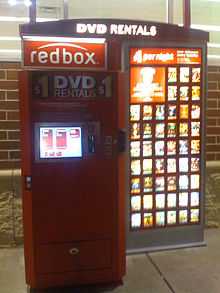

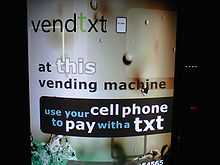
Vending machines have gone through significant changes and innovations. Many machines are evolving to accept credit cards and companies are now able to monitor a machine's state from afar.
Classic gumball machines led to people packaging items in small capsules that can be dispensed one at a time from such machines. Larger capsules can be dispensed by claw crane machines.
While most vending machines cannot be stacked on top of each other, the Gacha and Gashapon capsule toys vending machines are designed to operate while stacked on a countertop.
John Greenwick of the Greenway company is a former Mars Electronics employee and former product manager of the first ever bill acceptor. According to him, the industry saw a need for the ability to standardize the acceptance of coins and currency on a global basis. As such, a standard known as MDB (Multi-Drop Bus) was invented. This allows for machines around the world to utilize the same bill acceptor and coin changer devices with an international specification.
Doug M. Sanford of Vending Times notes that "many vendors today do not remember the urgency with which industry leaders called on their peers to install coin mechanisms that held the patron's money in escrow until the vend was made; to post a telephone number that a customer could call to report a failure and request a refund; to make sure their drivers were cleaning the machines adequately and replacing burnt-out lamps; and so on and on". More recent innovations include improved coin and bill validation and the rapid adoption of sense-and-feedback systems to verify that the vend was made.
According to Michael Kasavana, National Automatic Merchandising Association at Michigan State University, the advent of reliable, affordable wireless technology has made telemetry practical and provided the medium through which cashless payments can be authenticated. Research shows that 50% of consumers will not purchase from a vending machine if its "Use exact change only" light is on. Machines with telemetry can transmit sales and inventory data to a route truck in the parking lot so that the driver knows what products to bring in for restocking. Or the data can be transmitted to a remote headquarters for use in scheduling a route stop, detecting component failure or verifying collection information.
Many telemetry technology providers are competing for the standard as the market tests different vending machine setups. Based on early documentation, digital telemetry communication for stocking and Credit Card style payment systems saves up to 40% of the carbon emissions over standard human monitored, and mechanical change systems.
Another innovation is self-service, standalone Automated Retail stores, for example with a touchscreen. Once a product is purchased the robotic arm delivers it into the pickup box and charges the consumer's credit card.
In the area of service vending machines other innovations include internet kiosks and DVD vending. Cashless vending now allows consumers to use debit cards or precharged "keys" such as the U-Key for added convenience. Vending is a multi-billion dollar industry.
To prevent injuries or death from tipping or striking the machine, most modern snack vending machines equipped with spirals to hold products contain lasers near the access door at the bottom. If a purchased item does not break the laser beam when falling, the spirals will automatically turn, usually three times to ensure that a product will fall. If this still does not occur, the customer will be asked to make another selection or will be refunded their money.
Off-grid fuel cell based vending machines with swappable hydrogen storage tanks are entering the market.[20]
Cashless payments will soon be on many vending machines in the near future. The majority of vending machine operators plan to add credit card swipers to their machines in 2011, according to a study by Apriva, wireless transaction services company. About 57 percent of companies surveyed by Apriva said they planned to expand the number of their machines outfitted with card swipers.[21]

Sweden's Distec company invented the bokomaten machine to vend library books at remote locations and during off hours. The first library vending machine in the United States is located Norman, Oklahoma and is part of the Pioneer Library System. The vending machine was built by EnvisionWare, is available 24-hours, and is able to hold 1000 returned items and 400 items for future borrowing.[22]
After few decades of gradual progress in innovations, vending machines have seen a trend to integrate more recent technology and innovations such as interactive touch display, digital signage, video analytics to recognize gender and age group, remote content management, cloud manageability for sales, inventory, refill, etc., all of which make them to be known as smart vending machines. A Malaysian company Silkron has developed and been providing the smart vending software and SDK known as Vendron for vending machine makers, vending operators and system integrators to leverage on smart vending technology and capabilities.
Individual countries
Europe
In Europe there are approximately 3.7 million vending machines, according to the latest European Vending Association market report. The majority of European vending machines are hot drinks machines, with the industry in Europe employing directly more than 85,000 people.[23]
Hong Kong
Vending machines are known as 自動售賣機 ('automatic selling machine') in Chinese. Due to high labour cost and limited space, vending machines have been introduced to Hong Kong. Majorities of the vending machines are in the public, with some in the shopping centres and schools.
The majority of vending machines in Hong Kong are stocked with drinks, snacks. Besides that, some vending machines are stocked with cases and accessories for mobile phones and cameras, umbrellas, cosmetics, and so forth.
The vending machines in Hong Kong allow the customer to pay by cash, credit cards and Octopus cards, a type of smart card.
India
_(4).jpg)
Vending machines are not very common in India and are usually found only in major cities or along some national highways. Seaga India, a 100% subsidiary of the Seaga Group of USA, is the pioneer for bringing the concept of vending machines to India. Seaga India's machines are being used by the Delhi Metro, the state government, IT parks, factories, BPO, etc...[24][25]
Vending machines are used to sell snacks, beverages, condoms, public transit tickets, jewellery, and change for currency notes.[26][27][28]
Several reasons have been attributed to the lack of success of vending machines in India. The availability of cheap labour makes operating stores or kiosks economical; customers lack of technical knowledge and feel uneasy using vending machines; a lack of machines that accept a wide variety of payment methods; vandalism, rough use, and poor maintenance of the machines.[29] However, vending machines are relatively new in India and analysts believe that usage will rise.[30]
Japan

Japan has the highest number of vending machines per capita, with about one machine for every twenty-three people.[31]
The first vending machine in Japan was made of wood and sold postage stamps and post cards.
In Japan, vending machines are known as jidō-hanbaiki (自動販売機) from jidō, or "automatic"; hanbai, or "vending"; and ki, or "machine", jihanki (自販機) for short. Vending machines are also commonly used in casual restaurants to sell meal tickets, similar to automats: one purchases a meal ticket from a vending machine, then presents the ticket to a server, who then prepares and serves the meal. These are referred to as 食券機 (shokkenki, "food ticket machine").
Many vending machines in Japan no longer accept the old style 500 yen coins which were minted between 1982 and 2000 due to counterfeiting issues; since the 500 yen coin had a similar weight and exactly the same diameter and metal alloy as the 500 South Korean won coin, which at the time was one-tenth of the value, counterfeiters would often use modified 500 won coins in vending machines to make a profit.[32]
With the introduction to services such as "Osaifu-Keitai", cell phones can now be used to pay for the items bought from vending machines. In 2008, a smart card called taspo was implemented in the majority of tobacco vending machines across the country to restrict sales of cigarettes from them. From such machines cigarette purchases may only be made by those in possession of the card, which is issued to adult applicants (which in the case of Japan, is 20 years of age). The card is held up to a sensor after money is inserted into the machine. Some beer vending machines also require age verification.
Netherlands

A common feature of snack bars in the Netherlands is known as the automatiek or more commonly the automaat and is similar to an automat. It consists of a wall lined with coin-operated machines. Each has a vertical row of little windows, with a (usually hot) snack behind each, e.g., a croquette, a frikandel or a hamburger. Usually the automatiek is part of a larger establishment and will sell a broader range of food and drinks not suitable for vending machines at a counter. Behind the machine is the kitchen where the snacks are prepared, with the little windows being re-supplied from the back.
Automatieks may provide chairs for customers, but it is also common to have seating only for customers buying food at the counter. Sometimes the vending machines are in an outside wall, and no shelter is provided.
These vending machines are often located at railway stations or in busy shopping streets.
Soviet Union
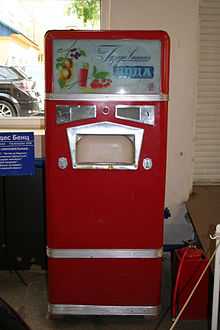
In the USSR, vending machines became more common after Nikita Khruschev visited the USA. On his order, many types of vending machines were designed.[33] Soft drink machines were popular in all Soviet cities. They were designed to dispense into a glass and equipped with a washing device.[34] After the hyperinflation of 1992–94, most of the machines were disabled because coins were no longer in use.
See also
References
- ↑ "Old World, High Tech". Smithsonian Magazine. [World's First Vending Machine (scroll down to read)]. Retrieved June 2011.
- ↑ "Automatic Vending Machines". Highbeam Business.
- ↑ Kerry Segrave (12 July 2002), Vending Machines: An American Social History, McFarland, ISBN 978-0-7864-8159-0
- ↑ What's "Tei-Park"?
- ↑ "Cigarette vending machines banned in England". BBC. Retrieved 16 May 2014.
- ↑ Vending Machines of Japan
- ↑ Steven v. Fidelity & Casualty Co. (1962) 58 C2d 862
- ↑ "First network of egg vending machines opened in Timisoara, Romania". vendmach. Retrieved 16 May 2014.
- ↑ "Le collectif européen d'artistes mixed-médias UCD – Un certain détachement propose des multiples d'art au travers de distributeurs automatiques" (in French). UCD. Retrieved 16 May 2014.
- ↑ "Vending machines". Japan-guide.com. Retrieved June 2011.
- ↑ "Carvana opens used car vending machine in Atlanta". FoxNews.com. Retrieved 29 April 2014.
- ↑ Otto, Mary; Aratani, Lori (2006-05-04). "Soda Ban Means Change at Schools". The Washington Post. Retrieved 2008-03-08.
- ↑ Finz, Stacy (2006-05-22). "State high school soda ban expected on books by 2009". San Francisco Chronicle. Retrieved 2008-03-08.
- ↑ Cowan, Alison Leigh (2005-06-15), "Rell Vetoes Junk-Food Limit in Connecticut's Public Schools", The New York Times, retrieved 2009-11-30
- ↑ "School vending machine laws would help kids lose weight, study shows". CBS News. 13 August 2012. Retrieved 2 January 2013.
- ↑ Daly, Pete (29 December 2012). "Healthier snacks from smarter machines". Grand Rapids Business Journal. Retrieved 2 January 2013.
- ↑ Simmons, Amy (6 August 2010). "Schools urged to install free condom machines". ABC News. Retrieved 2 January 2013.
- ↑ Peterson, Hayley (25 December 2012). "Philadelphia installs condom dispensers in 22 public schools to battle 'epidemic' of sexually transmitted diseases". Daily Mail. Retrieved 2 January 2013.
- ↑
- ↑ Hydrogen powered vending machine unveiled
- ↑ "Vending Machines Going Cashless". Credit.com. 5 March 2011. Retrieved 25 March 2011.
- ↑
- ↑ www.vending-europe.eu
- ↑ "Condom Vending Machines in India". Merinews.com. 2007-08-18. Retrieved 2013-01-03.
- ↑ TNN Mar 12, 2011, 11.05pm IST (2011-03-12). "Condom vending machines on NH-37 - Times of India". The Times of India. Retrieved 2013-01-03.
- ↑ "Condom vending machines to suit shy customers". The Indian Express. 2009-06-17. Retrieved 2013-01-03.
- ↑ "Now, buy gold via vending machines". The Indian Express. 2011-10-24. Retrieved 2013-01-03.
- ↑ TNN Jul 14, 2012, 04.59AM IST (2012-07-14). "Railways to install coin vending machines - Times of India". The Times of India. Retrieved 2013-01-03.
- ↑ "A Vend in the Road: An Insight into the Vending Machine Market and the Neo-Indian Consumer". Youthkiawaaz.com. Retrieved 2013-01-03.
- ↑ "The Business of Vending Machines | DARE - Because Entrepreneurs Do |". DARE. 2009-09-30. Archived from the original on 2012-04-23. Retrieved 2014-10-06.
- ↑ According to the Japan Vending Machine Manufactures Association website, there are 5,582,200 vending machines in Japan, or one machine for every 23 people.
- ↑ Nikkei Business, vol. 1019-1021. 日経マグロウヒル社. page 359.
- ↑ Bingo, Торговые автоматы СССР, infovend.ru, 2012-02-02 (Russian)
- ↑ Автомат AT101-M, gazirovka.15kop.ru, 2010, retrieved 2014-05-09 (Russian)
Further reading
- Krug, Bryon. (2003). Vending Business-in-a-Box. BooksOnStuff.
External links
- In Praise of Vending Machines - slideshow by Life magazine
- World's Strangest Vending Machines:, From Florida to Dubai, some of the oddest things come out of machines, By Katrina Brown Hunt, Travel + Leisure, 10/4/10
